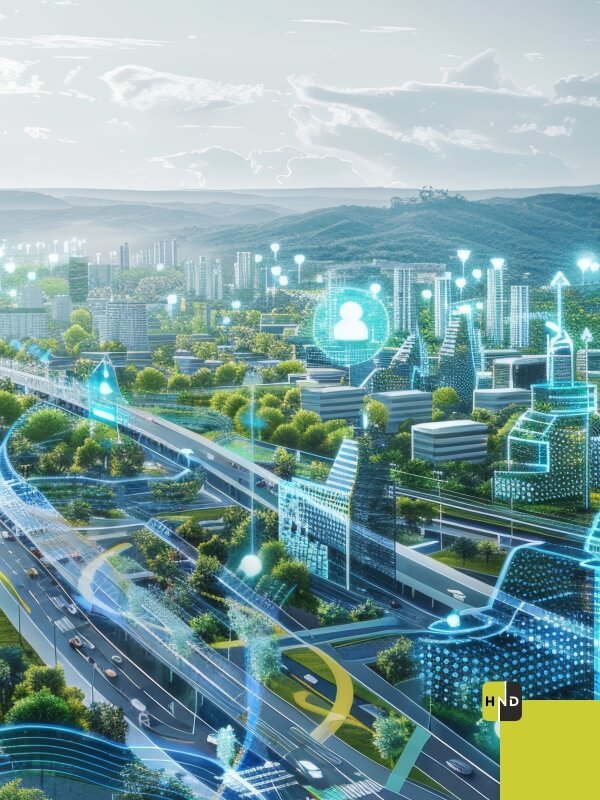Smart Architecture Innovation
In an increasingly accelerated urbanizing period, sustainable growth and more fulfilling living needs cannot be brought out without innovation and smart architecture input. Smart architecture brings smartness with technical inputs for improved energy usage or consumption from well-designed innovations or structures built along with needs analysis for dwellers. Since growth in a town or the world at large entails an expanded habitat, then smarter designs come about to keep human beings up better in those improved urban habitation conditions.
Are you prepared to learn how smart architecture is changing the urban landscape for the better? Let’s explore how this new wave of innovation redefines our cities.
Concept of Smart Architecture Innovation
Smart architecture innovation is the application of advanced technologies in architectural design to enhance functionality, efficiency, and sustainability in buildings. It’s more than architecture; it is renewable energy sources, smart materials, and automation systems that change with environmental conditions. The bottom line is an aesthetically pleasing building but one that caters to its users’ needs.
Smart architecture widely uses IoT devices to allow buildings to monitor their energy consumption, adjust lighting, and even the climate control system in real time. This sets in a harmonious interaction between the needs of humans and architectural design in bringing about a more harmonious living environment.
Critical Elements of Innovation in Smart Architecture
Several core aspects outline smart architecture innovation, which is truly a transformative approach to urban development. Such elements are as follows.
- Sustainability
Sustainability forms the core of smart architecture. The application of renewable sources in a building, such as solar panels and wind turbines, ensures that an ecological footprint is significantly reduced. Sustainable materials and energy-efficient systems prevent waste and save resources.
- Automated Systems
Smart buildings have many automated systems that make the space more functional. For example, smart lighting can adjust the brightness according to the hour of the day or if the space is occupied. The HVAC system can change the temperature according to real-time data, thus ensuring comfort as well as great energy savings.
- Connectivity
In a smart architecture, connectivity means the ability of buildings to talk back to the user and other systems. In a smart home technology, the resident can control lighting, security, and appliances from their room, thus increasing convenience and safety.
- Adaptive Design
With a flexible ability and adaptability of smart architecture, buildings tend to change themselves along with requirements based on either their users’ or environmental demands. This form of adaptability could be derived with modular principles by easily modifying and expanding.
Benefits of Smart Architecture Innovation
The benefits of Smart Architecture Innovation are manifold, impacting various stakeholders, including residents, city planners, and the environment.
- Improved Quality of Life
Smart architecture, therefore, improves the life quality of the residents. It includes features such as improved air quality, optimum lighting, and even temperature regulation and provides healthy and comfortable living to the inhabitants. Moreover, landscapes and recreational areas are integrated, which contributes to physical as well as mental wellness.
- Economic Merits
There is an economic value of smart architecture, as energy-efficient buildings will help owners and tenants save a significant amount on the cost of running them. Besides, the buildings often have a higher property value and stimulate local economies due to increased foot traffic and business opportunities.
- Environmental Impact
Smart architecture is an important player in climate change mitigation because it reduces energy consumption and encourages sustainability. Green buildings decrease the carbon footprint of a city due to the reduced exploitation of non-renewable resources, and biodiversity in cities is increased.
Examples of Smart Architecture Innovation projects include:
- The Edge, Amsterdam
The Edge is located in Amsterdam and is rated as one of the smartest buildings in the world. Bosco Verticale, or Vertical Forest, is located in Milan and incorporates a unique natural light-maximizing design together with an energy management system to ensure energy usage is optimized with over 1,000 sensors monitoring and maximizing energy use—a model for the future of architecture.
- Bosco Verticale, Milan
Bosco Verticale, or Vertical Forest, in Milan, is an extraordinary example of smart architecture where the city dweller can see trees and plants living on balconies in the thousands, fostering biodiversity and air purification in this concrete jungle.
- Bullitt Center, Seattle
Known as one of the greenest commercial buildings in the world, the Bullitt Center in Seattle is powered entirely by renewable energy. Its design has advanced water and energy systems that ensure a net-zero footprint. The building is a testament to how smart architecture can redefine urban spaces.
Future Scope of Smart Architecture Innovation
The future of smart architecture innovation appears to be very promising as technology continues to advance. Artificial intelligence, machine learning, and materials science are going to unlock even more efficient ways in the designing and operation of buildings. Some of them are as follows:
- Advanced User Interfaces: More intuitive systems for controlling and interacting with building features.
- Smart Urban Planning: Smart architecture principles at the city level to make holistic, sustainable urban environments.
- Resilient Design: Buildings that resist extreme weather occurrences and accommodate various climate change scenarios.
Conclusion
Smart architecture innovations are changing the face of the urban landscape with smart architectural solutions that make a city more sustainable, efficient, and livable. It will assist in overcoming the challenges of urbanization and enhance the quality of life of residents in cities. As we move ahead, in the future, introducing technology into architecture promises exciting changes and an even more sustainable urban environment.

